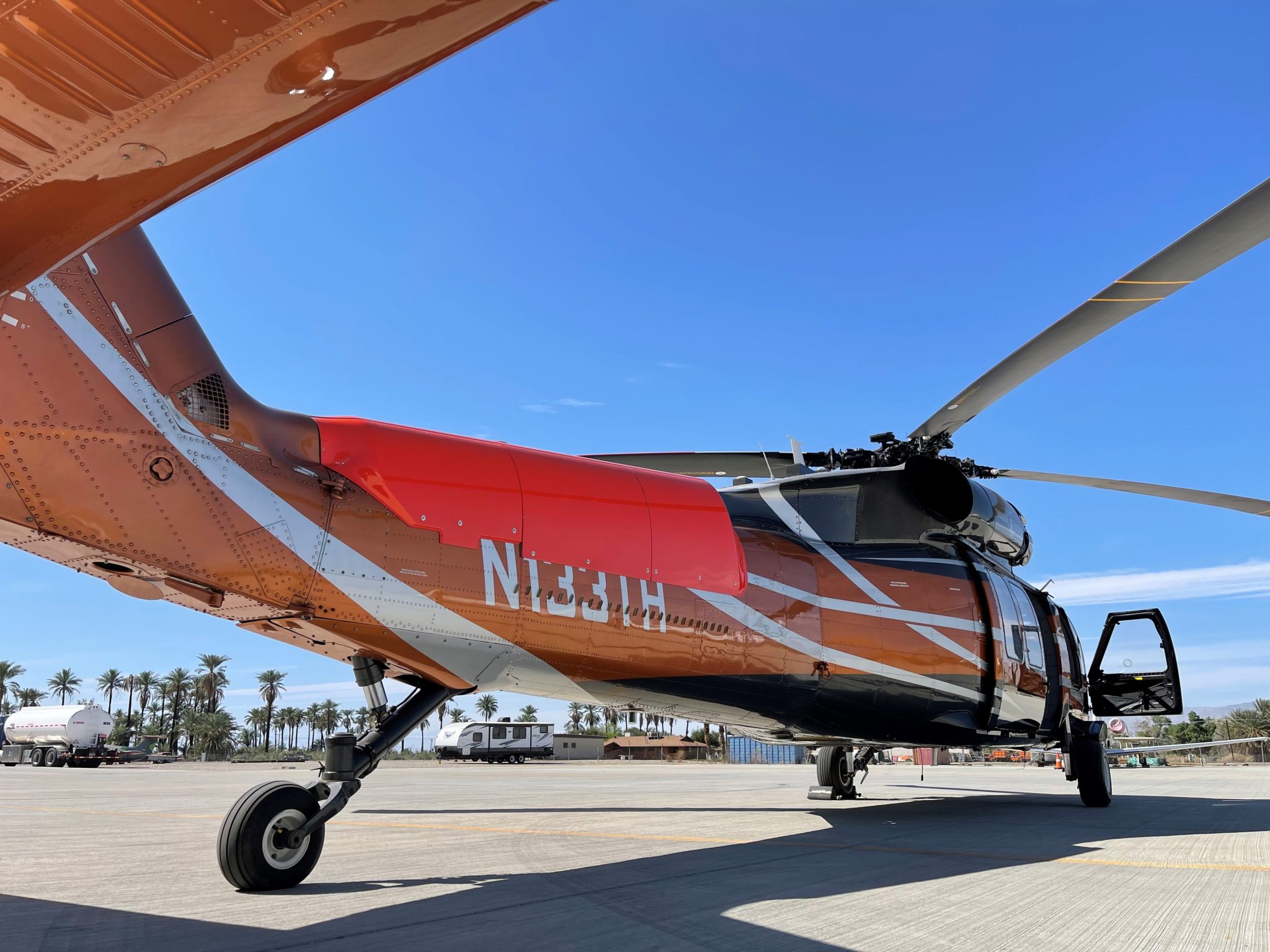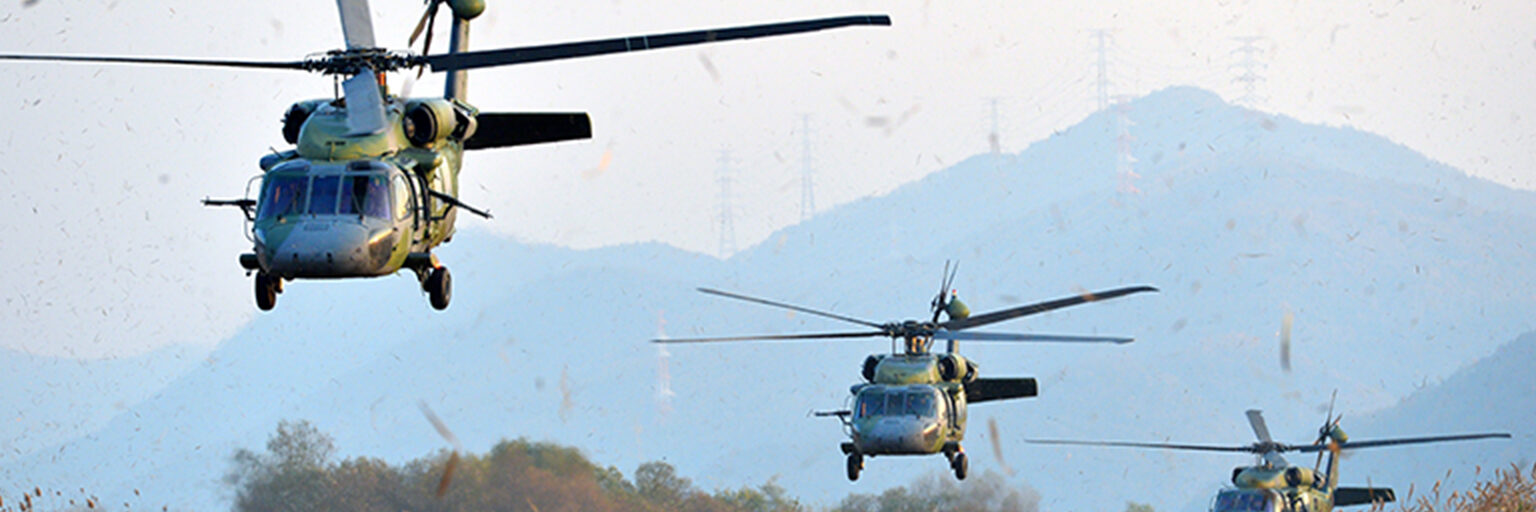Navigating the Skies: Advanced Pilot Training for UH-60 Helicopters
Navigating the Skies: Advanced Pilot Training for UH-60 Helicopters
Blog Article
Introducing the Key Functions and Capacities of the UH-60 Helicopter
The UH-60 helicopter stands as a testimony to the technology and engineering expertise of its developers. With its sleek style and effective engine, it has the capacity to navigate through the most treacherous surfaces. What really establishes this helicopter apart are its sophisticated avionics and navigating systems, ensuring precision and precision in every mission. Its adaptability understands no bounds, as it easily changes between different roles, from army transportation to clinical evacuation. And let's not forget its defensive systems, developed to make the most of survivability in hostile environments. As we delve much deeper into the vital features and capacities of the UH-60 helicopter, prepare to be amazed by its unmatched performance and the myriad of possibilities it gives the table.
Engine and Efficiency
The UH-60 helicopter boasts an impressive engine and performance, showcasing its capacities in various mission scenarios. Geared up with 2 General Electric T700-GE-701D turboshaft engines, each generating 1,994 horsepower, the UH-60 can reaching an optimum rate of 183 knots (333 km/h) and a range of 363 maritime miles (673 kilometres) This level of power makes sure the helicopter's agility and speed, permitting it to maneuver swiftly in crucial scenarios.
Moreover, the UH-60's engines are developed to provide phenomenal power-to-weight proportion, making it possible for the helicopter to carry a maximum exterior tons of 9,000 pounds (4,082 kg) This payload ability makes it perfect for transporting troops, devices, and supplies, making the UH-60 a reliable possession in fight and calamity relief operations.
In terms of efficiency, the UH-60 includes innovative innovations and attributes to enhance its ability to move and stability. Its four-bladed major rotor system, paired with a four-bladed tail rotor, gives phenomenal lift capacity and exact control, ensuring smooth and steady trip even in challenging atmospheres.
In Addition, the UH-60's engine is equipped with an automatic flight control system, which aids the pilots in keeping optimal flight criteria, reducing pilot workload and boosting security. With its robust engine and excellent efficiency, the UH-60 helicopter is a reliable and versatile platform for completing a variety of goals.
Avionics and Navigation Solution
Avionics and navigation systems play an essential duty in guaranteeing the UH-60 helicopter's operational performance and security. These systems are accountable for supplying the pilots with important details and devices to navigate via different trip problems and surfaces.
The UH-60 helicopter is furnished with sophisticated avionics systems that boost situational awareness and allow specific navigating. Among the crucial functions is the Integrated Avionics Suite (IAS), that includes an electronic map screen, a flight management system, and a data transfer system. The electronic map screen offers the pilots with real-time details concerning their position, path, and surrounding airspace. The trip monitoring system aids in planning and implementing flight routes, while the data transfer system allows for the exchange of info with various other airplane and ground stations.
Along with the IAS, the UH-60 helicopter is geared up with a navigation system that utilizes numerous sensors, such as GPS, inertial navigating systems, and Doppler radar - uh-60. These sensing units function with each other to offer accurate and dependable elevation, positioning, and velocity information, also in difficult weather or GPS-denied atmospheres

In Addition, the UH-60 helicopter is furnished with a Traffic Accident Evasion System (TCAS) and a Surface Recognition and Caution System (TAWS) The TCAS signals the pilots to possible aircraft crashes and provides support to avoid them, while the TAWS advises the pilots of potential terrain hazards and offers terrain avoidance assistance.
Objective Capacities and Versatility
With its innovative avionics and navigating systems ensuring operational effectiveness and safety and security, the UH-60 helicopter showcases amazing objective capacities and convenience. Made to fulfill the needs of various missions, the UH-60 can performing a large range of jobs, making it an important property to armed forces procedures worldwide.
One of the essential mission capacities of the UH-60 is its capability to conduct troop transportation. With a roomy cabin and seats for as much as 11 combat-equipped soldiers, the helicopter can quickly deliver workers to and from the combat zone. This capacity makes it possible for efficient and fast release of troops, boosting operational adaptability and responsiveness.
In addition to troop transportation, the UH-60 excels in casualty discharge (CASEVAC) missions. Equipped with medical devices and cots, the helicopter can supply important clinical assistance to damaged workers. Its capacity to rapidly evacuate casualties from remote or unsafe areas can considerably enhance the opportunities of survival and decrease the time it takes to get clinical therapy.
In Addition, the UH-60 is well-suited for search and rescue (SAR) operations. Equipped with innovative sensors and communications systems, the helicopter can rapidly locate and draw out individuals in distress, whether on land or pop over to this web-site at sea. Its versatility in various atmospheres and weather makes it a reputable possession for SAR objectives.
Moreover, the UH-60 can be geared up with different tool systems, enabling it to provide close air support and engage targets on the ground. This capacity boosts the helicopter's performance in battle circumstances and enhances its duty as a multi-purpose system.
Defensive Solutions and Survivability
Enhancing its capability to stand up to dangers and make sure the safety and security of its crew, the UH-60 helicopter is furnished with sophisticated defensive systems and survivability functions. These systems are designed to shield the airplane and its occupants from a variety of possible dangers encountered throughout armed forces operations.
Among the vital defensive systems on the UH-60 is the Common Projectile Warning System (CMWS) This system finds and tracks inbound projectiles, supplying the staff with timely alerts and allowing them check this to take proper incredibly elusive actions. In addition, the helicopter is furnished with an advanced infrared countermeasures system, which can jam the support systems of heat-seeking missiles, raising the airplane's chances of survival.
To better boost survivability, the UH-60 includes a crashworthy framework and seats system. This layout is intended to minimize the danger of injuries to the crew in case of a crash or tough landing. Additionally, the helicopter is geared up with self-sealing gas storage tanks, which can help prevent fuel leaks and fires in the event of a hit.
Another secret function adding to the UH-60's survivability is its repetitive trip read review control system - uh-60. This system supplies back-up controls in situation the main system stops working, allowing the pilot to keep control of the airplane and safely land it
Maintenance and Assistance Requirements
The UH-60 helicopter needs normal upkeep and support to ensure its ideal efficiency and functional preparedness. As a complex airplane, it is important to comply with a methodical upkeep program to identify and correct any kind of potential concerns. The upkeep needs for the UH-60 include scheduled evaluations, preventative upkeep, and repairs. These activities are accomplished by trained upkeep personnel that adhere to rigorous guidelines and treatments detailed by the manufacturer.
Regular inspections are performed to analyze the total condition of the helicopter and identify any type of signs of wear and tear. This consists of inspecting the engines, rotor systems, avionics, and other vital elements. Precautionary upkeep tasks, such as lubricating relocating parts, replacing filters, and inspecting electric systems, are additionally executed to avoid tools failing and make certain the helicopter's reliability.
In addition to normal upkeep, the UH-60 requires recurring support in regards to logistics and extra parts monitoring. A robust supply chain is required to make sure the availability of spare components, tools, and equipment needed for repair and maintenance. This includes proper stock management, purchase, and sychronisation in between maintenance devices and suppliers.
To sustain the UH-60 fleet properly, a comprehensive upkeep and assistance facilities is established. This includes maintenance centers, training programs for maintenance personnel, and technological support from the supplier. The goal is to decrease downtime and guarantee that the helicopters are constantly in a state of functional preparedness, prepared to satisfy their goal requirements.
Conclusion
In verdict, the UH-60 helicopter is a remarkable aircraft with remarkable engine efficiency, advanced avionics and navigation systems, and flexible goal capacities. Generally, the UH-60 helicopter stands as a highly qualified and reputable aircraft in armed forces and private applications.

To better enhance survivability, the UH-60 features a crashworthy framework and seats system.In conclusion, the UH-60 helicopter is an exceptional airplane with outstanding engine efficiency, progressed avionics and navigation systems, and versatile goal capacities.
Report this page